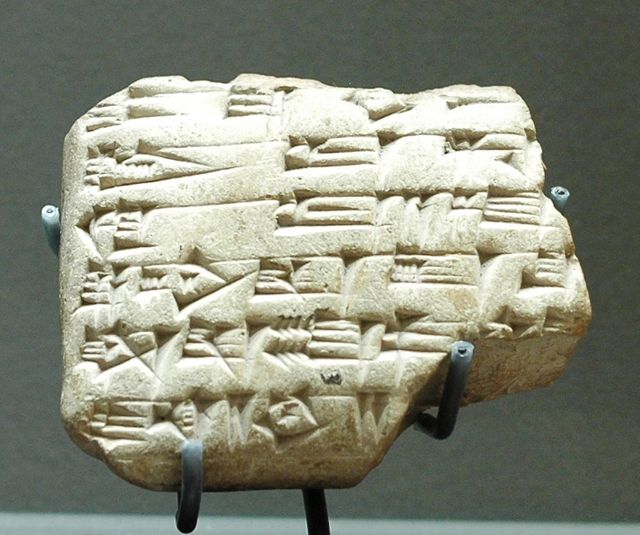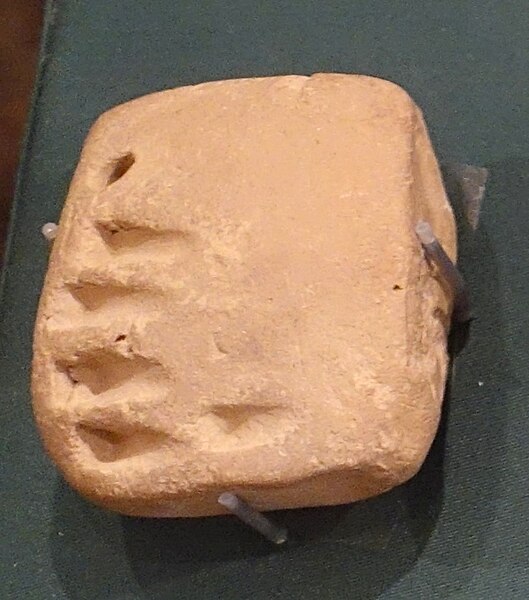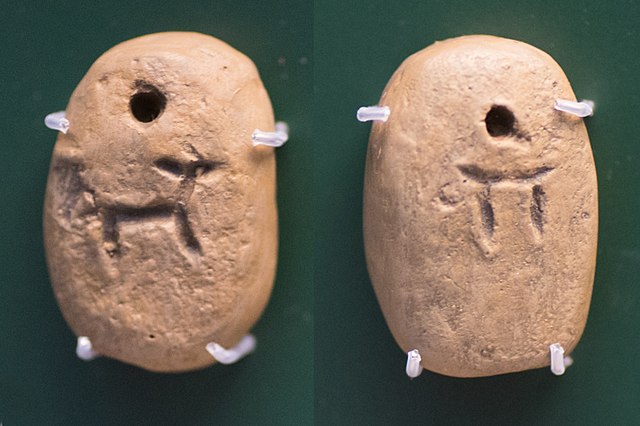The cuneiform U sign is found in both the 14th century BC Amarna letters and the Epic of Gilgamesh. It can be used for the alphabetic u, instead of the more common 2nd u, (ú). It has two other uses, commonly. It can be used for the number 10, but its probable greater use is for the conjunction, u, with any of the conjunction meanings: and, but, else, etc.
Amarna letter EA 365-(Reverse), Biridiya to Pharaoh, "Furnishing Corvée Workers". Conjunction use of u in first line, a segue: "And see...!", (..."But Look!"). The entire substance of the clay tablet letter follows on (this)-reverse side (one line needed as 'final line' on an edge). (2nd use of conjunction u, and..., at start of line 8 (1st character at left.)) (high resolution, expandible photo)
Line 3, left (example) Ù (cuneiform) 3rd U: conjunction for And, but, else, etc.
Cuneiform is a logo-syllabic writing system that was used to write several languages of the Ancient Near East. The script was in active use from the early Bronze Age until the beginning of the Common Era. Cuneiform scripts are marked by and named for the characteristic wedge-shaped impressions which form their signs. Cuneiform is the earliest known writing system and was originally developed to write the Sumerian language of southern Mesopotamia.
A trilingual cuneiform inscription of Xerxes I at Van Fortress in Turkey, an Achaemenid royal inscription written in Old Persian, Elamite and Babylonian forms of cuneiform
Clay bulla and tokens, 4000–3100 BC, Susa
Numerical tablet, 3500–3350 BC (Uruk V phase), Khafajah
Pre-cuneiform tags, with drawing of goat or sheep and number (probably "10"), Al-Hasakah, 3300–3100 BC, Uruk culture






